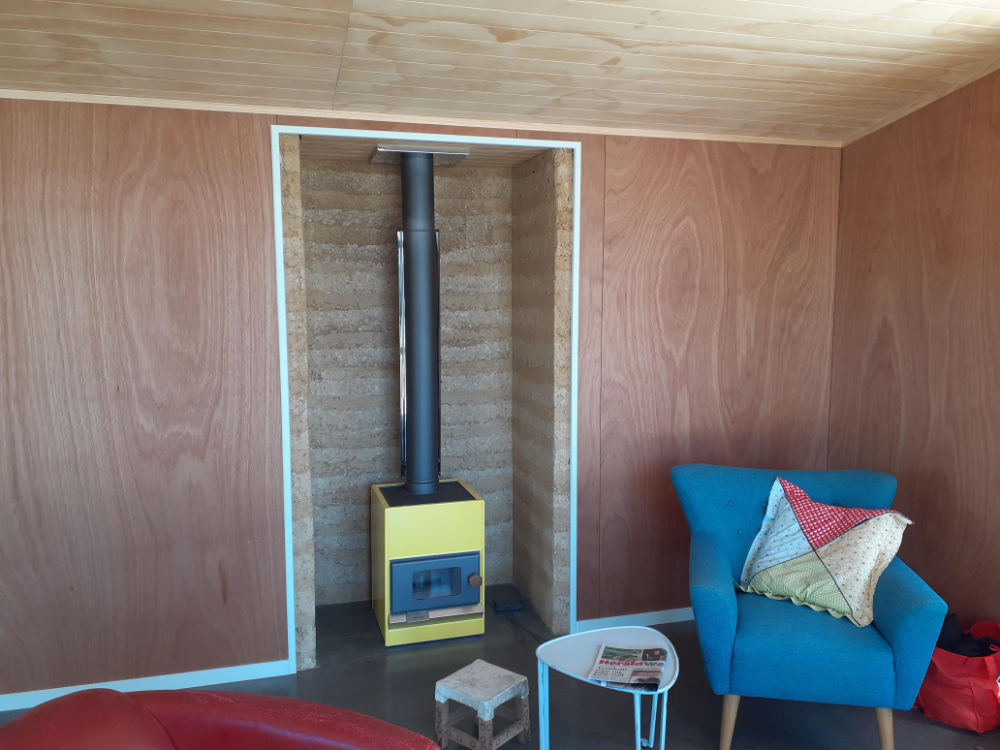Structural Rammed Earth Walls

Thick rammed earth walls act as load bearing structures and can be engineered to meet New Zealand building codes by utilising the NZ Earth Building Standards. Earth is remarkably flexible in its use and modern techniques makes many design ideas possible, however the most stable and straightforward walls are thick, long and simple. Walls are typically 40-60cm thick and exterior walls require insulation. We are able to help with design suggestions and can provide a range of technical details to architects.
Veneer Rammed Earth Walls

Feature walls with rammed earth make a dramatic statement and add valuable thermal mass to the interior of the house. 12-40cm thick feature walls are possible, either fixed to a structural wall or freestanding depending on the rammed earth thickness. It is also possible to prefabricate rammed earth blocks to make the installation possible after the roof has been closed in.
Benefits of rammed earth construction
- Thermal Mass is a key component of rammed earth construction and its ability to smooth out temperature fluctuations between night and day and maintain a relatively constant and comfortable temperature year round. The high thermal mass of the thick walls (40-60cm typically) can absorb large amounts of heat and radiate it back to the room as the temperature cools. The walls act as a giant thermal battery.
- 100% Natural Material is used in the rammed earth mixture. Stone, sand, silt and clay are the components of a rammed earth mixture, with small amounts of lime used in erosion break lines. The walls don’t off-gas any harmful chemicals and are completely recyclable forever.
- Low Energy, High Performance buildings are possible with rammed earth. Minimally processed clay and earth require little energy to build with and create a healthy, natural, self-regulating interior environment that requires minimal energy to maintain.
- Simple and beautiful aesthetics are possible with rammed earth walls which are commonly left in their raw state. These solid, monolithic walls age well with minimal maintenance requirements. Colours never fade, and weathering produces a natural and beautiful patina.
Erosion control
Erosion of raw earth walls exposed to the elements is a concern for many, however there are a number of ways that rammed earth walls are protected from erosion to ensure that it only occurs minimally and doesn’t affect the structural integrity of the walls. Over the first few years of a rammed earth walls lifetime the outer surface with slightly erode as the fine material is washed away leaving a rough aggregate surface. Once this stage is reached erosion slows and then almost completely diminishes.
- Large eaves are the easiest and most effective way to reduce the amount of water that hits the surface of the walls.
- Lime erosion lines are installed in the exterior of the wall every 300-400mm vertically during construction. These solid lines slow water running down the surface, minimising erosion. Timber, tiles, stone or other solid materials can also be used as break lines.
- Large aggregate in the rammed earth mixture creates a rough surface texture as the smaller fine material is slowly washed away over the first few years. The exposed aggregate further slows the speed of water on the surface and stops the water from washing away more clay and silt.
Structural strength
Cement free rammed earth is a strong and solid material that easily reaches the standards required by New Zealand building laws. Earth (as well as concrete) is strong in compression, but not in tension or flexion. Reinforcing is required in the walls which gives it flexural and tensile strength to resist earthquake forces.